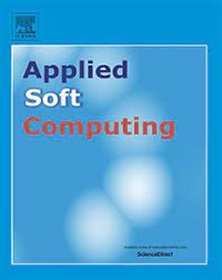Adaptive encoding and comprehensive attention decoding network for medical image segmentation
IF 7.2
1区 计算机科学
Q1 COMPUTER SCIENCE, ARTIFICIAL INTELLIGENCE
引用次数: 0
Abstract
Medical image segmentation involves partitioning different tissues or lesion areas within medical images. Achieving automatic segmentation can markedly improve efficiency and accuracy, which is significant for biomedical clinical diagnosis. With the rapid development of deep convolutional neural networks (DCNN), U-Net has been widely used in medical image segmentation due to its encoder-decoder structure and skip connection. However, it is still hard for U-Net to handle certain challenging cases. In this study, we propose an adaptive encoding and comprehensive attention decoding network (AA-Net), which is derived from U-Net to address the issues of the semantic gap as well as the loss of spatial information during convolutions. AA-Net takes into account the different characteristics of the encoder and decoder. In the encoder, we design a simple Adaptive Calibration Module (ACM) to improve the representation ability of candidate features. In the decoder, we introduce a Comprehensive Attention Feature Extraction (CAFE) module, which employs multiple attention mechanisms after feature fusion to alleviate the semantic gap. Benefiting from CAFE, AA-Net can better handle the challenging cases where the segmentation targets vary in position, size, and scale. Additionally, we suggest a weighted hybrid loss function for precise boundary segmentation. We validate the effectiveness of AA-Net and each component on three biomedical image datasets. The results demonstrate that our method outperforms state-of-the-art methods in different medical segmentation tasks, proving it is lightweight, efficient, and general.
求助全文
约1分钟内获得全文
求助全文
来源期刊

Applied Soft Computing
工程技术-计算机:跨学科应用
CiteScore
15.80
自引率
6.90%
发文量
874
审稿时长
10.9 months
期刊介绍:
Applied Soft Computing is an international journal promoting an integrated view of soft computing to solve real life problems.The focus is to publish the highest quality research in application and convergence of the areas of Fuzzy Logic, Neural Networks, Evolutionary Computing, Rough Sets and other similar techniques to address real world complexities.
Applied Soft Computing is a rolling publication: articles are published as soon as the editor-in-chief has accepted them. Therefore, the web site will continuously be updated with new articles and the publication time will be short.
 求助内容:
求助内容: 应助结果提醒方式:
应助结果提醒方式:


